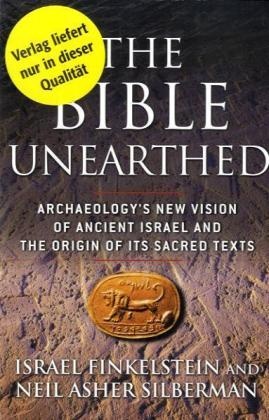Read more
Zusatztext Jonathan Kirsch Los Angeles Times A brutally honest assessment of what archaeology can and cannot tell us about the historical accuracy of the Bible...presented with both authority and panache. Informationen zum Autor Israel Finkelstein is a professor of archaeology at Tel Aviv University. He is a leading figure in the archaeology of the Levant and the laureate of the 2005 Dan David Prize in the Past Dimension—Archaeology. Finkelstein served for many years as the Director of the Institute of Archaeology at Tel Aviv University and is the co-Director of the Megiddo Expedition. He is the co-author, with Neil Silberman, of The Bible Unearthed and the author of many field reports and scholarly articles. Neil Asher Silberman is director of historical interpretation for the Ename Center for Public Archaeology and Heritage Presentation in Belgium. He is a contributing editor to Archaeology magazine and the author of The Hidden Scrolls: Christianity, Judaism, and the War for the Dead Sea Scrolls ; The Message and the Kingdom ; and Digging for God and Country , among other books. Klappentext Challenging the fundamentalist readings of the Scriptures and marshaling the latest archaeological evidence to support its new vision of ancient Israel, "The Bible Unearthed" offers a fascinating and controversial perspective on when and why the Bible was written and why it possesses such great spiritual and emotional power today. Zusammenfassung For the first time, the true history of ancient Israel as revealed through recent archaeological discoveries- and a controversial new take on when, why and how the Bible was written. Inhaltsverzeichnis Contents Prologue: In the Days of King Josiah Introduction: Archaeology and the Bible PART ONE The Bible as History? Searching for the Patriarchs Did the Exodus Happen? The Conquest of Canaan Who Were the Israelites? Memories of a Golden Age? PART TWO The Rise and Fall of Ancient Israel One State, One Nation, One People? (C. 930-720 BCE) Israel's Forgotten First Kingdom (884-842 BCE) In the Shadow of Empire (842-720 BCE) PART THREE Judah and the Making of Biblical History The Transformation of Judah (C. 930-705 BCE) Between War and Survival (705-639 BCE) A Great Reformation (639-586 BCE) Exile and Return (586-C. 440 BCE) Epilogue: The Future of Biblical Israel Appendix A: Theories of the Historicity of the Patriarchal Age Appendix B: Searching for Sinai Appendix C: Alternative Theories of the Israelite Conquest Appendix D: Why the Traditional Archaeology of the Davidic and Solomonic Period Is Wrong Appendix E: Identifying the Era of Manasseh in the Archaeological Record Appendix F: How Vast Was the Kingdom of Josiah? Appendix G: The Boundaries of the Province of Yehud Bibliography Index...
About the author
Israel Finkelstein is one of the world's foremost biblical archaeologists, the Chairman of the Department of Archaeology at Tel Aviv University, and the Director of the Sonia and Marco Nadler Institute of Archaeology.
Neil Asher Silberman, a contributing editor to Archaeology magazine, is Director of Interpretation for the Ename Centre of Public Archaeology and Heritage Presentation in Belgium.Neil Asher Silberman is director of historical interpretation for the Ename Center for Public Archaeology and Heritage Presentation in Belgium. He is a contributing editor to Archaeology magazine and the author of The Hidden Scrolls: Christianity, Judaism, and the War for the Dead Sea Scrolls; The Message and the Kingdom; and Digging for God and Country, among other books.

